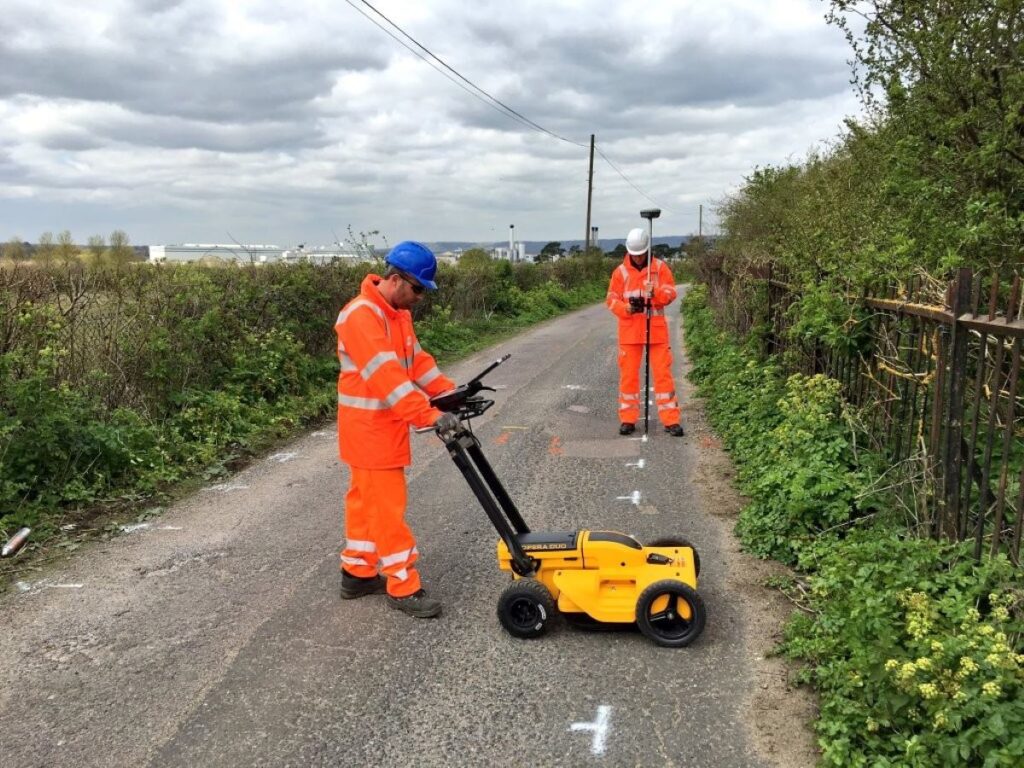
The Importance of a Utility Locator in Excavation Projects
In today’s construction landscape, the integrity and safety of excavation projects hinge on accurate information about underground utilities. As excavators are typically engaged in the process of digging and moving earth, the presence of hidden utilities can present significant risks. This is where a utility locator becomes invaluable, ensuring that projects proceed safely and efficiently.
Understanding Utility Locators
A utility locator is a specialized device used to identify and map underground utility lines, ensuring that excavation activities do not inadvertently damage essential services. Understanding the functionality and types of utility locators is crucial for anyone involved in excavation projects.
Definition and Function of a Utility Locator
Utility locators employ electromagnetic signals, acoustic technology, and other methods to detect and locate underground utilities. By transmitting signals through the ground or utilities, these devices allow operators to visualize similar underground structures before any excavation work begins. The primary function of a utility locator is to minimize risk while facilitating the safe and productive execution of excavation tasks.
Different Types of Utility Locators
There are several types of utility locators, each with unique capabilities suited for specific applications. The most common types include:
- Electromagnetic Locators: These devices detect the electromagnetic fields produced by live utility lines, making them ideal for locating power and telecommunications cables.
- Ground Penetrating Radar (GPR): GPR uses radar pulses to image the subsurface, allowing for the detection of a wide variety of buried objects, including non-metallic utilities such as PVC pipes.
- Acoustic Locators: These tools detect sounds or vibrations emitted from underground utilities, making them useful for identifying the locations of pipelines.
Choosing the right type of locator based on the project requirements can significantly enhance the effectiveness of the excavation process. Additionally, the integration of advanced technologies, such as GPS and GIS mapping, has revolutionized the way utility locators function. These technologies allow for precise mapping and documentation of underground utilities, creating a comprehensive database that can be referenced for future projects. This not only aids in immediate excavation tasks but also contributes to long-term urban planning and infrastructure management.
Moreover, the importance of utility locators extends beyond just preventing damage to utilities. They play a crucial role in ensuring public safety and environmental protection. For instance, accidental strikes on gas lines can lead to catastrophic consequences, including explosions and environmental disasters. By utilizing utility locators, contractors and excavators can adhere to safety regulations and best practices, ultimately fostering a safer working environment for everyone involved. As technology continues to advance, the capabilities of utility locators are expected to evolve, further enhancing their effectiveness and reliability in the field.
The Role of Utility Locators in Excavation Projects
Utility locators serve a critical role in ensuring that excavation projects are both safe and efficient. By mapping underground utilities accurately, these devices help prevent costly and dangerous consequences that can arise from inadvertently striking utility lines.
Preventing Damage to Underground Utilities
Damage to underground utilities can lead to severe disruptions, including service outages, hazardous material spills, and even explosions. The direct costs associated with repairing damaged utilities can be substantial—often running into thousands of dollars—and can lead to project delays. By utilizing a utility locator, contractors can clearly identify the layout of utilities, allowing them to plan their excavation safely. Furthermore, the use of advanced technology in utility locating, such as ground-penetrating radar (GPR) and electromagnetic detection, provides a more comprehensive view of the subsurface environment. This technology not only enhances the accuracy of utility mapping but also helps in identifying non-metallic lines, which are often overlooked but equally important.
Enhancing Safety on the Excavation Site
Safety is paramount on any excavation site. The presence of buried utilities poses significant risks to workers if they are not accurately identified prior to digging. Utility locators contribute to the creation of a safer workplace environment by informing workers of the exact location of hazards. When workers are aware of underground infrastructure, their ability to avoid accidents improves, ultimately enhancing the overall safety protocols of the project. Additionally, the implementation of utility locators fosters a culture of safety awareness among team members. Regular training sessions on the use of these devices can empower workers with the knowledge they need to recognize potential risks and respond appropriately. This proactive approach not only minimizes the likelihood of accidents but also enhances the overall efficiency of the excavation process, as workers can focus on their tasks without the looming threat of unexpected utility strikes.
The Process of Using a Utility Locator
To maximize the benefits of utility locators, it is essential to understand the process involved in their use. Effective deployment requires thorough planning and operational knowledge.
Pre-Excavation Planning
Before any excavation begins, a comprehensive pre-excavation planning stage is necessary. This includes reviewing existing utility maps, coordinating with utility companies, and conducting a site assessment. All this information lays the groundwork for successful utility detection. During planning, operators should verify if the utility locator they are using is suitable for the specifics of the project. Additionally, it is crucial to consider the environmental factors that may affect the detection process, such as soil composition and moisture levels, which can influence signal strength and clarity. Engaging with local authorities to understand any regulations or permits required for excavation can also streamline the process and prevent potential legal issues down the line.

Operating the Utility Locator
Operating a utility locator requires both training and experience. Operators must understand how to calibrate the device correctly, select appropriate settings based on the utility type, and interpret the data provided by the device. Furthermore, operators should conduct thorough sweeps of the area, marking out any identified utilities, and creating a visual map that can be referenced throughout the excavation process. This diligence ensures that every potential risk is accounted for. It is also important for operators to remain vigilant during the operation, as external factors such as nearby construction activities or electromagnetic interference can affect the accuracy of the readings. Regular maintenance and updates to the utility locator equipment can enhance performance and reliability, ensuring that operators are equipped with the best tools for the job. Moreover, documenting the findings and any anomalies during the scanning process can provide valuable insights for future projects, contributing to a culture of continuous improvement in utility management practices.
The Impact of Not Using a Utility Locator
Failing to utilize a utility locator during excavation projects can have significant downsides, affecting not only the project timeline and costs but also raising safety and legal concerns.
Potential Risks and Consequences
When excavation activities ignore the presence of underground utilities, the potential for disastrous outcomes increases. Striking a utility line can lead to electrical shocks, gas leaks, and other life-threatening situations. Beyond immediate dangers, projects can face shutdowns for emergency repairs, resulting in lost time and resources. Moreover, the disruption caused by hitting a utility line can extend beyond the immediate worksite, affecting surrounding areas and potentially leading to service outages for local residents and businesses. This ripple effect can damage a contractor’s reputation and strain relationships with clients and the community. You may like to get How Pipe Location Services Protect Underground Infrastructure visit https://homeinspections-toronto.com/how-pipe-location-services-protect-underground-infrastructure/
Legal Implications and Responsibilities
Contractors have a legal responsibility to ensure the safety of their excavation sites. Not employing a utility locator could expose contractors to lawsuits, regulatory fines, and claims from utility companies. If a contractor damages a utility line due to negligence, they may be held liable for reparations, leading to significant financial repercussions that could jeopardize their business. Additionally, the legal landscape surrounding excavation work is becoming increasingly stringent, with many jurisdictions enforcing stricter regulations regarding utility identification and damage prevention. This means that contractors must stay informed about local laws and best practices to avoid costly penalties and ensure compliance, which can add another layer of complexity to project management.
Choosing the Right Utility Locator for Your Project
Given the variety of utility locators available, selecting the appropriate tool for a specific excavation project is crucial. Several factors should be taken into consideration to make an informed decision.
Factors to Consider
When choosing a utility locator, consider the following factors:
- Type of Utilities: Identify the types of underground utilities expected in the excavation area to ensure compatibility with the locator.
- Depth of Utilities: Different locators have varying depth detection capabilities, so it is essential to understand how deep the utilities may lie.
- Site Conditions: Factors like soil type, moisture levels, and clutter can affect the performance of utility locators; thus, it is vital to select a device suited for the environment.

Recommendations for Different Excavation Scenarios
For projects that anticipate hitting a variety of utility types, a combination of locators such as electromagnetic locators paired with GPR may be the most prudent choice. For specialized applications, such as locating fiber optic cables or gas pipelines, dedicated locators designed for those materials would be ideal.
Moreover, it is important to consider the technological advancements in utility locating equipment. Many modern locators now come equipped with advanced features such as GPS integration, which allows for precise mapping of utility locations. This not only enhances the accuracy of the locating process but also provides valuable data for future reference, making it easier to plan subsequent excavation projects. Additionally, some locators offer real-time data transmission capabilities, enabling teams to share information instantly, thus improving communication and efficiency on-site.
Furthermore, training and experience play a significant role in the effective use of utility locators. While the equipment may be sophisticated, the operator’s knowledge of how to interpret the data and adjust settings based on site-specific conditions is paramount. Investing in training programs for staff can lead to better decision-making during excavation, ultimately reducing the likelihood of accidents and costly damages. With the right combination of technology and skilled personnel, projects can proceed with greater confidence and safety.
